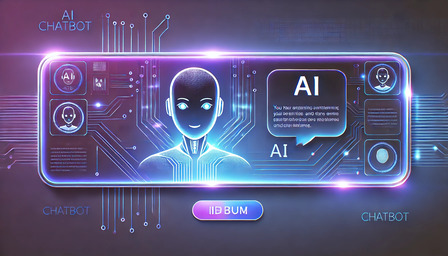
 Over the years, human-computer interaction has gone through a major shift. Initially, people relied on command-line interfaces, which required technical knowledge to operate. Later, graphical user interfaces made technology more accessible. However, interaction was still largely dependent on predefined commands and structured inputs.
Over the years, human-computer interaction has gone through a major shift. Initially, people relied on command-line interfaces, which required technical knowledge to operate. Later, graphical user interfaces made technology more accessible. However, interaction was still largely dependent on predefined commands and structured inputs.
In comparison to these earlier forms, conversational AI is bringing a more intuitive way for people to communicate with technology. Instead of clicking buttons or typing specific commands, they can now engage in natural conversations. This shift is making digital experiences more seamless and accessible to a wider audience.
How Conversational AI Works
Conversational AI is built on a combination of natural language processing (NLP), machine learning, and speech recognition. These systems analyze input, understand intent, and generate appropriate responses. Unlike traditional chatbots that follow scripted replies, modern conversational AI adapts to different contexts and continuously improves over time.
Similarly, advancements in large language models have made interactions feel more natural. Instead of robotic and rigid responses, AI can now engage in fluid conversations, making interactions feel more like speaking with a human than with a machine.
The Impact on Everyday Interactions
Customer Support and Service
One of the most noticeable areas where conversational AI is making an impact is customer service. Businesses are using AI-driven chatbots to handle inquiries, assist with troubleshooting, and provide recommendations. This not only reduces wait times but also improves efficiency.
However, some challenges still exist. While AI can handle basic queries effectively, complex issues often require human intervention. Still, the combination of AI and human agents is proving to be a powerful solution.
Personal Assistants and Smart Devices
In the same way, personal assistants like Siri, Alexa, and Google Assistant have changed how people interact with their devices. These AI-driven assistants help users with scheduling, reminders, weather updates, and even controlling smart home devices.
Admittedly, they are not perfect, and misunderstandings can still occur. Despite this, their ability to adapt and improve over time continues to make them an integral part of daily life.
Healthcare and Virtual Assistance
Conversational AI is also playing a significant role in healthcare. Virtual assistants are helping patients schedule appointments, receive medication reminders, and even provide mental health support.
In particular, AI-driven chatbots are being used to provide preliminary diagnoses based on symptoms. While they are not a replacement for doctors, they are proving to be valuable tools in improving healthcare accessibility.
AI in Relationships and Emotional Support
Conversational AI is not only assisting in practical tasks but also providing emotional companionship. Some AI models are designed to offer emotional support and meaningful interactions.
For instance, AI Girlfriend is an example of how technology is being used to create AI-driven companionship. These systems can engage in conversations, provide comfort, and even help individuals navigate loneliness.
The Role of AI in Business and Productivity
AI-Powered Chatbots for Enterprises
Companies are adopting AI-powered chatbots to streamline internal communication and improve workflow efficiency. These chatbots assist employees with HR-related queries, project management, and automated reporting.
Specifically, organizations are using AI to optimize customer engagement. Chatbots are becoming essential for businesses looking to scale operations while maintaining high-quality interactions with their customers.
AI for Marketing and Consumer Insights
AI is also redefining marketing strategies. Businesses are using AI to analyze consumer behavior, predict trends, and create personalized recommendations.
For the latest AI and tech news, platforms like Gramhir.pro provide insights into ongoing developments and industry trends. Keeping up with these updates allows businesses to stay ahead of the curve and make informed decisions.
The Challenges of Conversational AI
Despite its progress, conversational AI still faces several challenges.
Language and Context Understanding
Although AI has improved significantly in natural language processing, misunderstandings still occur. Some AI models struggle with context, sarcasm, or regional dialects. Consequently, developers are continuously working on refining AI’s ability to comprehend language better.
Ethical and Privacy Concerns
Privacy remains a major concern when it comes to AI-driven interactions. Since conversational AI collects and processes data, users are often concerned about how their information is stored and used.
Of course, companies must prioritize data security and transparency to ensure user trust. Ethical AI practices, such as responsible data handling and bias reduction, are crucial for long-term success.
Dependence on AI and Human Interaction
While AI is improving efficiency, over-reliance on automation can reduce the human touch in certain interactions. Many people still prefer speaking with a human, especially for sensitive or complex issues.
Even though AI is becoming more human-like, maintaining a balance between automation and human interaction is essential. Businesses and developers must ensure AI remains a tool that complements human effort rather than replacing it entirely.
The Future of Conversational AI
Eventually, conversational AI will continue evolving with advancements in deep learning and contextual understanding. As AI models become more sophisticated, interactions will feel even more natural and intuitive.
Meanwhile, industries will continue adopting AI-driven communication solutions. From customer support to healthcare, the impact of conversational AI will only grow in the coming years.
Subsequently, ethical considerations will become even more critical. Developers must focus on responsible AI practices, ensuring fairness, security, and transparency.
Conclusion
Conversational AI is changing the way people interact with technology. Whether it’s customer service, personal assistance, or healthcare, AI-driven communication is making digital experiences more seamless. While challenges exist, ongoing advancements continue to push the boundaries of what AI can achieve.
As businesses and individuals adopt AI-driven communication tools, the focus should remain on ethical AI development and maintaining a balance between automation and human interaction. Conversational AI is not just a technological innovation—it’s shaping the future of human-computer interaction in profound ways.





Leave a Reply